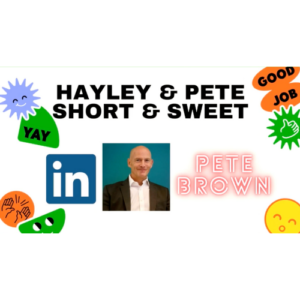I hear from job seekers everyday who are sending out hundreds of CVs, applying to every job possible but never hear back from recruiters or hiring managers. It’s hard to tell who’s at fault as there are multiple factors contributing to the lack of contact but more often than not I hear comments of “blame and shame” as I fondly put it… “they’re stockpiling CVs”, “they don’t have a job” or “they’re useless”. The loss in perceived desire to work for a company or recruiter has completely dissipated before first contact is made! Agreed not a great start but stop! There’s no need to lose faith, here’s how to avoid falling into the resume blackhole
In order to help you, first off I need to explain a few things, any good recruiter (just one person) will receive around 250 applications on one job alone and that recruiter could be managing between 30-50 jobs simultaneously, most probably more… have a think about that, it’s pretty overwhelming! Putting that aside you’ll need to understand recruitment software and its basic capabilities.
HR and Recruitment companies either use what’s abbreviated to an ATS or CRM system, an ATS system stands for “Applicant Tracking System” and CRM “Customer Relationship Management”. I’ll be frank I’m not so familiar with an ATS (please comment if you use ATS and it’s completely different) however I understand every complexity within a CRM, having developed my own from scratch on the Salesforce.com platform, Salesforce is like the Facebook of CRM systems so I’ve got solid knowledge to pass on
Back to the matter at hand, how do you avoid the resume blackhole?! The first rule to avoiding the blackhole is understanding “Matching Rules”. To begin, a matching rule is created in the ATS/CRM with the most simplistic rule being:
Does this person exist?
1. No – Create a record
2. Yes – Update the existing record
To determine if your details exist in a recruitment company’s database, their ATS/CRM system will have its own matching system, again very simplistic matching rule examples include:
1. Email address that the email has come from – if you send you send your friends CV as a recommendation it’ll get attached to your record
2. First Name + Surname + Email – This works well although what if you get married and your surname changed? Another record gets created
3. First Name + “Fuzzy” Surname + Email – There’s a possibility your CVs gets attached to a different record that has nothing to do with you whatsoever
The object of these rules is to keep all of your details under one record, the moment you change any of the basic information the system will create another record and your history starts from ground zero
Nearly all recruitment companies will use a whole multitude of matching rules to determine what works for them, for their specific sector or business needs so this is only the beginning, no singular matching rule or grouping of matching rules are anywhere near full proof so my advice on this is:
– Be consistent!
– Use one email id
– Don’t change your name on email and/or CV just because you’ve forgotten to add a middle name (I’ll explain more about CVs in the next post)
– Inform your recruiters of any update in contact or name details
In the next post i’ll explain how parsing systems work and how to present your CV to again avoid the resume blackhole
For advice on your CV, social profiles, interview techniques and more book a one to one appointment via

All
Hayley & Pete, Short & Sweet – Part 3
Pete has been looking for a very senior position since his redundancy last year. We thought it would be a great idea to show you

